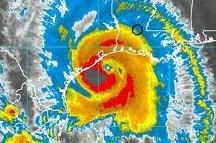News & Events
University Communication
Faculty Experts

UH Offers Experts on Hurricanes
Representing experts across various fields, University of Houston sources have expertise in an array of topics related to storms – before, during and after.
Imaging Research to benefit from new Endowed Chair
With the goal of advancing crossdisciplinary research in such areas as cardiovascular and neurological imaging, the university is creating the John S. Dunn Chair in Biomedical Imaging Sciences, funded by a $1 million gift from the John S. Dunn Research Foundation. This new position will be filled by a scientist who will lead research initiatives at UH and play a prominent role in the Institute for Biomedical Imaging Science (IBIS), the research partnership formed by UH, The Methodist Hospital and Weill Cornell Medical College.
Biomedical imaging includes such procedures as MRI and CAT scans and other advanced technologies, ranging from molecular imaging to nanotechnology to computer science. These techniques are used to observe the activities of organs, cells and molecules to improve diagnosis and treatment of many disorders, including those caused by cancer, cardiac malfunction and neurological conditions.
“Today, imaging sciences require the involvement of high-caliber professionals from a range of disciplines, including physical scientists, life scientists, computational scientists, engineers, radiologists and pharmacologists,” said Donald J. Foss, senior vice president for academic affairs and provost for UH. “IBIS is based on the belief that the solutions to many crucial problems will best be solved when scientists and physicians work in multidisciplinary groups and settings. The faculty member who will hold the Dunn Chair will be well-known for contributions to imaging science and will possess the research and leadership capabilities needed to facilitate the union of imaging resources at UH, The Methodist Hospital and Weill Cornell Medical College, along with other institutions. The program will help develop Houston as a national center for work in imaging.”
IBIS is already bringing together a critical mass of scientists from the three partner institutions to work toward developing new technologies, as well as improving and extending existing ones. The combined expertise is expected to speed advances and to increase the likelihood of receiving major grants for research and training. The current membership of IBIS includes 46 UH faculty members, 11 from Methodist and eight from Cornell.
“The field of biomedical imaging is really a cornerstone of the future of medicine – a future in which we will be able to identify, stage and treat disease such as a tumor in one patient visit, without the need to biopsy the tumor, without making a single incision,” said Dr. King Li, director of IBIS and chair of the department of radiology at The Methodist Hospital. “We are fortunate that IBIS enables us to bring together all the necessary disciplines to advance this valuable field quickly and in a unique way.”
The John S. Dunn Research Foundation supports biomedical research and education that benefit Texans primarily in the Greater Houston area. The Foundation was created in 1977 by its namesake, John S. Dunn, who was a prominent Houston businessman and philanthropist. Mr. Dunn actively managed his insurance agency and mortgage banking firm until his death in 1982. Today, the Dunn Foundation’s Trustees are John S. Dunn Jr., Dagmar Dunn Pickens Gipe, Charles W. Hall, C. Harold Wallace, J. Dickson Rogers and Dan S. Wilford. Dr. Bobby R. Alford is the Foundation’s medical adviser.
This endowed chair will help leverage and build upon the existing strengths at UH, resulting in increased funding from the National Institutes of Health and National Science Foundation at the investigator-initiated level, opportunities for multidisciplinary training grants and the development of large projects that incorporate investigators from different disciplines and institutions.
Also expected to benefit and grow through IBIS with the Dunn Chair are three clusters of excellence in the imaging sciences at UH – neuroimaging and cognitive science, cardiovascular imaging and informatics, and the cognitive neuroscience of development.
Neuro-engineers and cognitive scientists at UH participate in research on the neural bases of human cognitive processing, with a major focus being the multidisciplinary study of such sensory processing as vision, audition and somatosensory processing. Faculty members in computer science, electrical engineering, mathematics, mechanical engineering and physics participate in imaging research related to the cardiovascular system, focusing on identifying individuals with a greater than 10 percent risk of having a heart attack in the next 12 months and quantifying patient data to guide therapy. In the area of developmental cognitive neuroscience, UH faculty have established research programs evaluating the neural bases of reading, math and language disorders, such as dyslexia, as well as neurological disorders, such as spina bifida, traumatic brain injury and Alzheimer’s disease.
The Dunn Chair will lead the way in developing a coherent consortium in the imaging sciences that crosses institutional boundaries, and IBIS offers a unique opportunity to begin to provide the leadership necessary to develop it in Houston. The benefits from such cross-institutional collaboration in imaging will facilitate health care and research, leading to cost-sharing of material and intellectual resources, affording Houston the opportunity to enhance its reputation as a leader in this area that integrates medicine, engineering, computer sciences and the behavioral sciences.
For more information on IBIS, visit http://www.uh.edu/admin/media/nr/2007/06june/061107biomedical.html.
